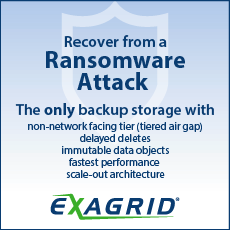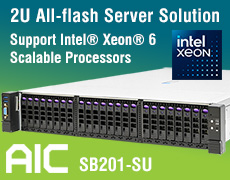New Imperative: Future-Proof Your Business with Hybrid Cloud Storage
Frost & Sullivan white paper
This is a Press Release edited by StorageNewsletter.com on June 27, 2024 at 2:03 pm
This white paper was written by Frost & Sullivan and sponsored by Nasuni Corp.
The New Imperative:
Future-proof Your Business with Hybrid Cloud Storage
Introduction
With the explosion of AI, IoT, and edge computing, businesses are collecting and processing a greater volume of diverse data types from different sources. Leveraging that data to enhance business decisions is critical to remaining competitive in 2024 and beyond.1

In a data-enabled, AI-centric business, data must be available, performant, and secure, regardless of how it is collected, when it is transferred, which applications and users access it, or where it is stored.
However, in today’s far-flung IT environments, it can be challenging for users and applications to quickly and securely access the necessary data.
Traditional file storage solutions often fail to deliver the necessary performance across locations to manage exponentially growing volumes of data and latency-sensitive applications.
1 Unless otherwise noted, all statistics cited are attributed to the Frost & Sullivan 2023 Global Cloud User Survey, conducted in September/October 2023.
Even the file data storage services from leading cloud providers aren’t built to handle the massive data volumes, growth, and throughput required for a data- centric firm, and users are restricted to their specific ecosystem. Cloud provider file solutions often have their own limitations, which can end up inhibiting your growth, promoting new data silos, and increasing total storage costs significantly. That’s why you need to completely rethink how your content is stored.
To unlock the value of your business data, you need a new solution that enables ubiquitous access to data anywhere, at any time, in a performance-based and cost-effective way.
To unlock the value of your business data, you need a new solution that enables ubiquitous access to data anywhere, at any time, in a performance-based and cost-effective way. In this vBook we will explore why neither traditional NAS nor the most popular public cloud storage options provide the right foundation for a data-centric company. You need a new method. The gold-standard alternative? Hybrid cloud storage.
Business Is Changing – Change Your Data with It
For over a decade, businesses have been on a digital transformation journey, leveraging new technologies as a way to maintain a competitive stance in the marketplace. Modern infrastructure is the underpinning of this digital transformation, and data is its fuel.
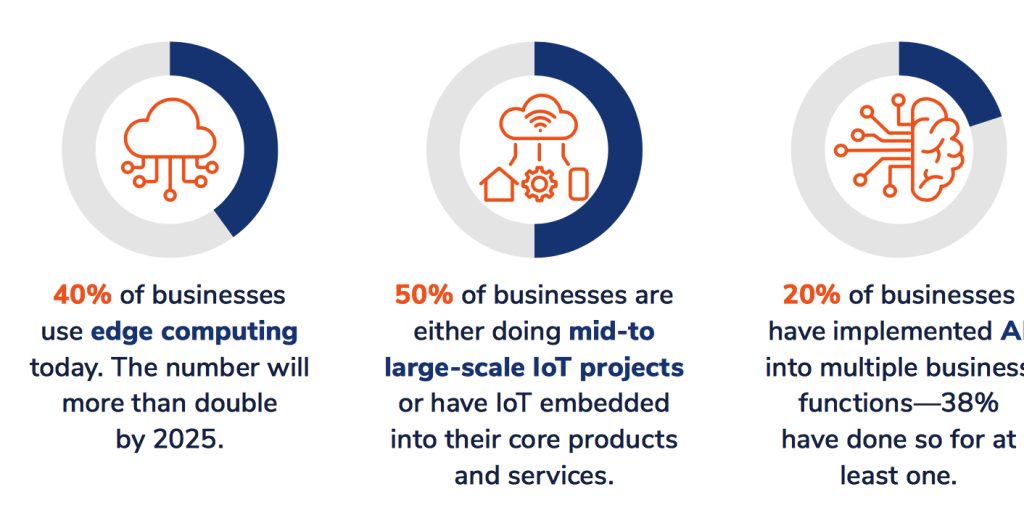
As businesses are deploying data-dependent technologies, cybercrime is on the rise. Distributed IT environments offer more touchpoints for malicious actors to breach datasets or disrupt access to applications.
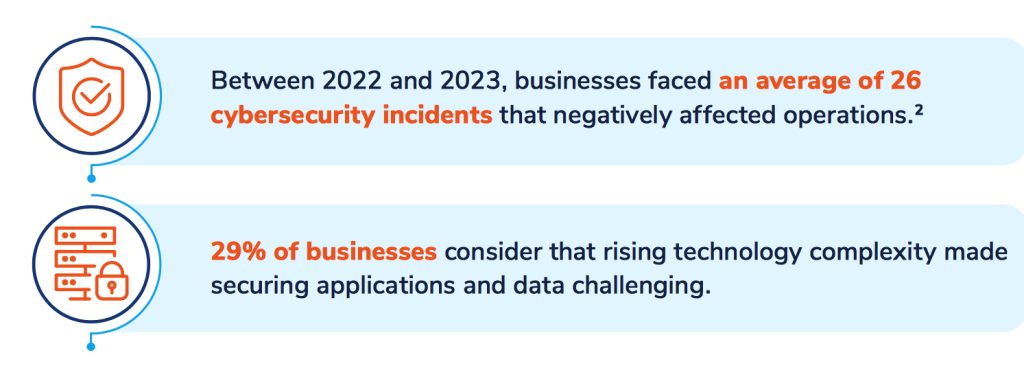
To support your digitally transformed organization, you must ensure that your data is available in any location and to any application that requires it in a way that is scalable, accessible, and, most importantly, secure.
2 Frost & Sullivan Cyber Security Voice of the Customer Survey, February/March 2023.
Your Data Is Working Harder, but Is Your File Storage Keeping Pace?Traditional file storage systems were not built to provide what your business requires for optimal success in distributed or hybrid cloud environments, edge computing, and AI deployments. Here are 5 ways that traditional, premises-based, or collocated storage appliances – and even public cloud-based storage services – fall short in supporting a digitally transformed business.
1/ Scalibility
You likely procured your current storage solution because it promised to scale as needed. However, scalability in traditional storage means scaling up – adding more servers or instances, migrating data, and managing load across multiple siloed systems.
File storage solutions from leading public cloud providers often have their own limitations, such as volume size, snapshot management, and other constraints, which inhibit growth, promote new data silos, and may increase storage costs.
However, in your digitally transformed business, you need all data to be accessible to any employee or endpoint in any location at any time, along with the ability to scale out – without the administrative burden of migrating and governing data across multiple silos.
2. Siloed data
Traditional storage is typically siloed, meaning that data stored in one infrastructure cannot easily be transferred to another. Doing so requires a planned migration effort that involves network capacity and security planning to ensure that data can be transferred safely and with minimal business disruption. Typically, a single data store is mapped to the application or workload that requires it, and sharing data means replicating and storing multiple copies, leading to increased storage costs. However, as enterprises leverage AI to innovate and transform their businesses, they will increasingly need to consolidate relevant data from multiple sources. Siloed data poses an obstacle to effective AI initiatives; consequently, you need a unified, global file store that can compile all data and expose it to AI services securely and consistently.
“17% of businesses are still storing and managing data that will be exposed to AI in silos at the application level.”
3. Localized performance
Traditional storage (and even typical cloud storage) tends to be geographically based, offering excellent performance for users or workloads that are in proximity to the data. For example, a customer database located in the corporate data center and accessed by call center employees down the hall may offer flawless throughput. A cloud-based dataset attached to a cloud application may also perform adequately. However, when data is accessed by users or workloads in different locations, predictable, consistent performance may be sacrificed. Network latency can cause applications to fail or stutter when geographically distant data cannot be transmitted quickly enough. Network physics simply doesn’t allow for consistent performance for workloads or users that are located far from the data they require. Instead, you need a storage service that keeps cached data copies at the network edge, close to any user that requires it, to eliminate latency issues.
4. Lack of a single namespace
In the simplest terms, a single namespace is a unified control and management system that allows different storage buckets, shares, and stores to look and function as one. Traditional storage solutions cannot be merged for governance purposes, resulting in difficulties maintaining consistent security and access and making combining data stores for analysis challenging. Data must be replicated and updated manually to make it available in a unified file store for analysis of IoT sensor data or for AI use. You need a storage service with unified management that enables easy and consistent governance of all data stores in the environment.
“41% of businesses struggle with data privacy, security, and governance as they implement AI. 36% also struggle to obtain, clean, and manage large-scale datasets for AI/ML.”
5. Difficult to manage at scale
Local storage typically requires local IT staff to configure and manage on an ongoing basis. Without a global namespace, the management burden increases, as each file store must be managed independently. This includes managing refreshes, regular backups, disaster recovery solutions, and, in many cases, data replication solutions. In a business environment where finding skilled IT managers has been difficult, ensuring appropriate management of traditional file stores can be challenging. You need a storage service that provides a single pane of glass for management of all file stores, enabling policies to be written and deployed once for all file stores in the environment.
The bottom line? Your business’s competitiveness and ability to capitalize on the latest technologies depend on its ability to leverage data. Traditional, siloed file stores – whether on-premises, collocated, or cloud-based – won’t enable the success of such initiatives.
The New Architecture: Hybrid Cloud Storage
Like many businesses, yours may already use some cloud-based storage to facilitate your digital transformation. Most cloud-based file solutions operate similarly to traditional on-premises storage; the difference lies in their location and in who updates the hardware. Despite the availability of management platforms to help unify these cloud-based file stores, many of the same traditional storage issues remain: siloed file stores, heavy management burden, and inadequate performance at the edge.
To ensure the success of your business, you need to consider new storage alternatives. The best practice standard? Hybrid cloud storage.
Modern hybrid cloud storage is architected differently, providing:
- A global, unified file system with multi-protocol access and multi-cloud capability
- Edge data caching and management to ensure local-like performance
- A hub-and-spoke architecture that leverages the scale and cost efficiencies of object storage
- Orchestration across file volumes that provides synchronization and prevents file conflicts
- Built-in ransomware detection and mitigation for rapid recovery and minimal business impact
- Centralized management to ensure consistent governance and security
This new type of hybrid cloud storage enables your business to scale data as needed for technologies like AI and ML, ensures access with low latency and high performance at any location, and provides consistent, built-in security and governance. Additionally, it unifies your data, simplifying access as well as reducing the management burden on your IT team. Hybrid cloud storage offers your business the functionality it needs for digital transformation success in a cost-effective and resource-efficient way.
Not All Hybrid Cloud Storage Is the Same
Here’s What to Look for in a Provider
Now you know that hybrid cloud storage is the way to go to ensure success as you digitally transform your business. But can you simply get hybrid cloud storage from any vendor and expect the same type of service and results? Not likely. Here are some key factors your business needs as you transform your data environment.
1/ Cloud-agnostic infrastructure: No matter what cloud(s), premises-based, or colo infrastructure your business uses for computing, your data should be able to be queried and accessed by that infrastructure. Look for vendors that can support the widest array of infrastructures available.
2/Multi-cloud support: Similar to the cloud-agnostic function, you need a vendor that can support a multi-cloud environment with a global, unified file system that runs across single, dual, or multi-cloud environments, yet looks the same across all of them.
3/ Multi-protocol support: You need a vendor whose storage is flexible and can support multiple applications – whether old or new – to access the same data from a single data store.
4/ Elasticity and scalability: To support your AI initiatives and become a datacentric business, you need limitless scalability with a limited budget. Look for a provider that can offer limitless immutable snapshots – to ensure security – with an architecture that supports the efficiencies of object storage.
5/ Performance at the edge: To support a geographically distributed workforce, potential branch business locations, and new applications like IoT, you need a storage solution engineered to support data performance at the network edge. Intelligent, locally available, caching ensures the performance your business needs.
6/ Built-in security: You need the protection of immutable storage, ensuring that if malicious actors target one data copy, you have other clean copies immediately available to choose from. In addition to unlimited, immutable storage, it’s important to look for providers that can integrate ransomware detection and remediation directly into the platform, ensuring that breaches are detected and stopped as soon as possible.
7/ Simple, unified data management: You need a vendor that can provide a simple and comprehensive view of all your data, in a single location, as well as tools to easily manage access, migration, security, and compliance.
HELP! Where Do I Start?
You may be convinced that you need to make some changes to your storage, but implementing those changes can be daunting.
Adopting hybrid cloud storage doesn’t have to be an all-or-nothing proposition – you can start gaining benefits with just a few steps.
Here are some strategies to consider to simplify your storage changes.
- Assess your current workloads and processes
Which ones might benefit from centralized storage or direct edge access? Applications like industrial operations systems, content delivery, or M&E often perform better with centralized file stores, so consider moving one or more applications of this nature first. - Consider the number and needs of remote locations, users, and regions
Does your business have several remote offices that require frequent access to corporate data? Do you have a large amount of hybrid or remote-working employees or road warriors who travel for business? If so, having consistent and secure access to your business data for these scenarios ensures productivity and data access for all. Moving critical business data that remote workers access frequently might be a good place for you to start. - Think about whether you have edge applications that require access to locally cached data
Are you a manufacturing business? Are you part of the IoT, using numerous sensors to collect data? Are you in a location where network connectivity could disrupt data transfer? Do you need to leverage graphics processing units (GPUs) in specific locations for AI training and inference? Businesses facing these situations – like industrial or retail businesses, or even mobile application providers – may benefit from caching data at the edge, closer to users.
Hybrid cloud storage can help your business in these and many other scenarios. The key is to consider your business needs and migrate to a new hybrid storage solution at your own pace to start realizing benefits. Many of your peers are already doing so today. Consider these business use cases where companies have benefited from migrating to a new hybrid cloud storage provide:
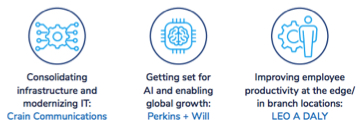
The Last Word
Data latency, lack of availability and consistency, and fragmented or unsecured data can all spell disaster for your business – whether for your AI initiatives, for data-centric decision-making, or for simply ensuring strong employee productivity and customer satisfaction – especially at edge locations. Hoping that your tried-and-true, on-premises based storage services will suffice, or that your standard cloud storage provider will offer the capabilities needed to transform your data and become a data-centric business, is not a formula for success. By being proactive and seeking out next-generation, hybrid cloud storage services, your business will ensure that data is widely available to all applications and services – including your AI integrations – for years to come.






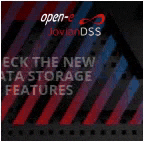







 Subscribe to our free daily newsletter
Subscribe to our free daily newsletter
